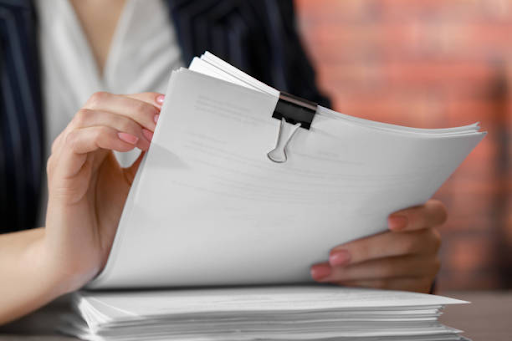
Due to rapid growth in technology, criminals use highly sophisticated techniques to access companies. They use fake IDs and other documents to execute their illegal plans. Unfortunately, many companies fall victim to criminal attacks due to a lack of document verification methods. Companies require digital means to identify individuals before having them onboard. Businesses utilize document verification processes to protect themselves from every kind of criminal attack. This process provides digital solutions to combat prevailing crimes. This blog post will explore the role of the digital document verification process in making onboarding secure from every kind of terrorist attack.
What is the Document Verification Process?
Companies employ verification of documents to legitimate the client’s identity. Individual authenticity is verified with the help of information provided over various documents such as identity cards, educational certificates, driving licenses, and passports. This process is done both digitally and manually. In manual verification, human beings are there to do paperwork and verify information all over the documents. In the digital document verification process, automated computerized systems are used to verify all the information provided to reveal a person’s identity.
Why Do Companies Require a Digital Document Verification Process?
In this age of digital technology, criminals are highly active in using various techniques to reach firms illegally. They use fake IDs and perform illegal activities. Many individuals reach onboard to perform data breaches and financial terrorism. Organizations are required to use reliable verification services to verify client’s identities.
Digital document verification integrates with advanced AI and ML solutions which contain robust algorithms to identify every kind of variation in forged and fake documents. Customers are asked to provide digital images, Optical Character Recognition (OCR) technology is used to fetch data over various documents. This data is then identified with the help of digital cross-matches over various databases. It facilitates organizations to eliminate the risk of fraudsters to be there on board.
How Does the Digital Document Verification Process Work?
Companies are rapidly moving toward the use of digital document verification solutions due to their robust mechanisms and accurate results. The process of document verification works in the following three steps;
Document Submission
Users are asked to submit their documents, these documents can be submitted in hard form and digital form. Online users submit digital or scanned images of identity documents and educational certificates. Many clients use webcams or smartphone cameras to upload their documents in electronic form. Documents collected in paper form are scanned and converted into digital images. These digital images are further processed to verify individuals’ identities.Storage
OCR technology fetches specific information over the documents, this information is stored in various electronic databases. OCR devices facilitate storage of a large number of documents in text format, it is highly convenient to access in a single click. Digitally stored databases allow crossmatches over other government and private records.Assessment
After the successful storage of information in electronic databases, AI and ML algorithms execute data matches and identify the legitimacy of the provided information. The images there on ID documents are then verified with the help of biometric face scanning to identify whether the information provided is authentic or not.Results
After successful evaluation of information, results are displayed over the screen as verified. In the case of fake IDs, the verification process highlights a red flag and makes the organization aware of possible future risks.
Major Falsified Complex Documents
The document verification process makes companies aware of every possible future risk. Following is the list of documents that are identified over verification and protect the organization from every kind of future risk.
Illegitimate
These documents are fake, they are not issued by the government. Illegitimate documents are identified as they do not have official stamps and signatures. In manual verification, human beings may fail to identify them due to fatigue or workload pressure but in the AI document verification process, they are identified.Modified
Many criminals use such documents that are real but they alternate some basic information there such as name or address, these kinds of modifications are identified with the help of AI and ML algorithms.Forged
Some criminals use fake signatures to make documents legitimate, and companies using digital document verification services can identify forged documents. These companies discourage fraudsters from being there on board and unveiling their fake identities.
Final Words
The document verification process is the primary need of every business while onboarding their clients. Companies have to identify their clients before making a business relationship with them. Any kind of ignorance in the document verification process may lead to future complexities such as data breaches or financial loss. Criminals try to use fake ID documents to reach a particular organization illegally. The document verification process empowers organizations to unveil fraudsters and discourage every criminal attempt.